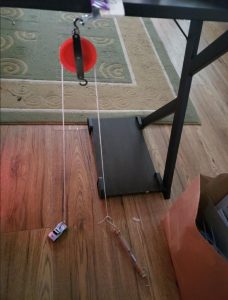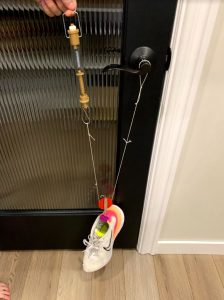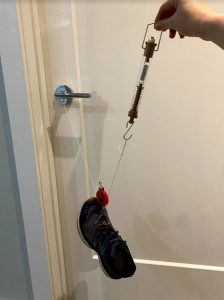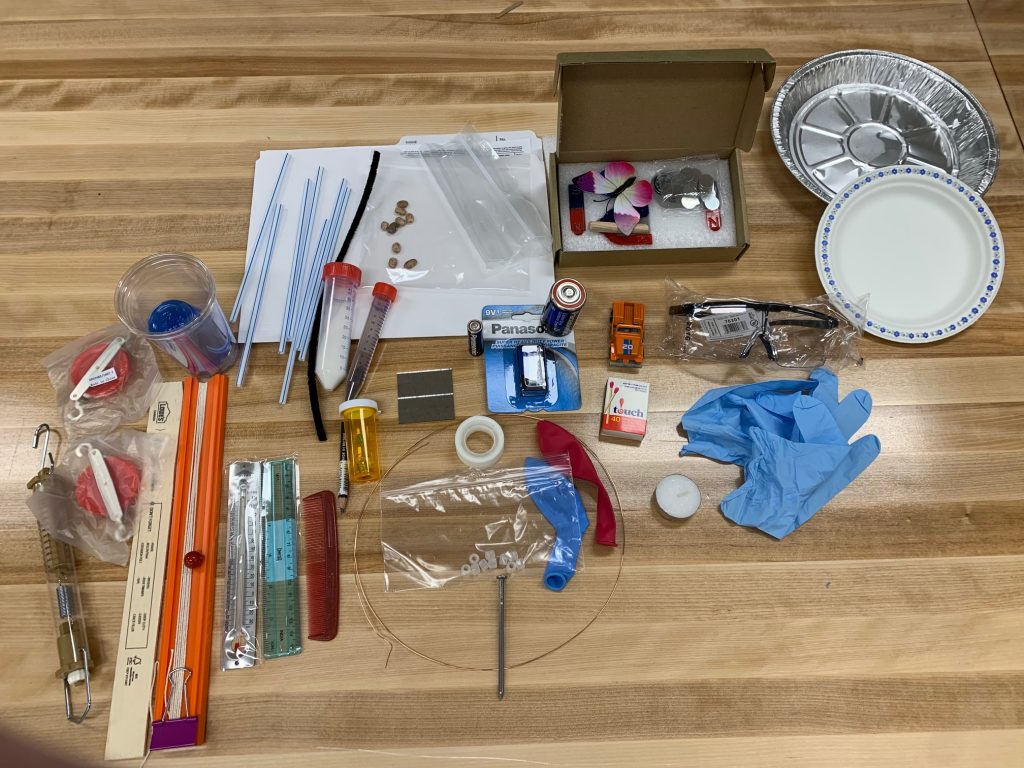Take-home science education lab kits were a great way developed by the science education instructional team to overcome the difficulties of teaching and learning science education remotely.
Teaching remotely has been challenging for many professors who are accustomed to face-to-face classroom instruction and methods. Transitioning into remote teaching environments is especially difficult for activity-based subject areas such as science education. Science education professor Dr. Shana Graham says, “the biggest challenge in teaching science during the pandemic is to find ways for students to engage in experiential learning.”
Science education professor John MacDonald concurs, “The learning of science content, skills and attitudes are all greatly facilitated by having the learners interact with the phenomena that illustrate the concept under study. Students communicating their observations and inferences with classmates is also an essential part of learning about the nature of science. Added in to the mix is the importance of students exchanging their reasoning as to how the activities add to their understanding of the concept and connecting this new found understanding to prior knowledge.”
In a previous term, professor Michael McCoy had developed math kits to help students engage with concepts and he found them successful.
“John, Shana and I decided the best way to go about teaching science education remotely was to develop a kit for our science methods classes,” says McCoy.
MacDonald, who had found that moving back to the university lab to teach had been helpful in that it “afforded access to materials and equipment not present in a home office,” knew students would also need to have access to materials to learn: “The kits were our attempt to provide our students with an opportunity to experience the activities that they should be using in their future classrooms.” The three professors put together 100 science kits for their elementary and secondary science methods classes.
Developing the kits during a pandemic presented some new problems. MacDonald says, “We had very little problem coming up with activities for the students to do. The real problems were finding sources for the materials that could provide them in a timely manner. Ordering balances and magnets from China was much easier than obtaining materials from Ontario.”
MacDonald says, “The reaction of the students to the activities seems to be largely very positive. Some activities we picked turned out to be less effective at a distance than face-to-face. We now have a better understanding of what constitutes a good at-a-distance activity and how to structure these activities for success. Doing activities at a distance should also help improve running these activities in a face-to-face setting.”
Besides the use of take-home science kits, Graham says she adopted a different way of teaching: “I found myself practicing more guided inquiry with my students, instead of coupled or full inquiry. When you cannot walk a round a classroom and observe students in order to determine how they are engaging and find ways to encourage them, you need to improvise. I found the use of guided inquiry created a less stressful and more encouraging online environment for online learning.”
Science education student Jaclyn Kearley says, “I think having this science kit … made learning more accessible in the virtual learning classroom. It kept me interested and engaged, and I felt like I was having a much higher quality learning experience than I would if we didn’t have the materials to interact with. In a virtual classroom, the science kits are an incredible tool!!!”
Student Ireland Sorestad says, “Getting the chance to use these science kits … made me excited to come to class as I knew I would get to be hands on. Compared to my other classes where I listened to lectures for hours, ESCI 310 was a breath of fresh air. Ultimately, I look forward to continuing using the science kit and implementing some of these activities in my future classroom.”
One student, Robertson, a mother of two, says, “This has been an extremely beneficial experience as I have learned an abundance of ways to incorporate the contents of this kit into the elementary classroom. Beyond this, it’s pretty incredible to see how much one can learn and experience from the comfort of one’s own home.”
Robertson continues, “Not only have I gained knowledge from this class but so have my daughters, who are ages 8 and 9. Mr. McCoy was kind enough to let my children join in the fun and learning. They looked forward to our Thursday night classes very much and I appreciate it as well.”
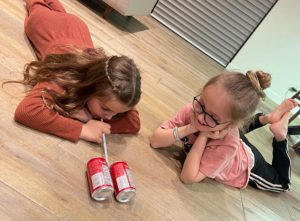
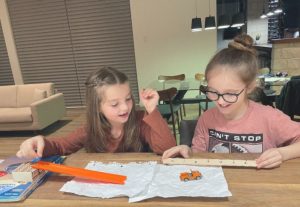
Robertson outlines some of the topics explored with the kit and the methods used in the course: “We explored forces and motion using toy cars and ramps (ruler and books), electricity as we saw what happens when you bring a negatively charged balloon close to a stream of water, investigating UV intensity with UV beads, aerodynamics using two cans and a straw and the list goes on. Throughout these Zoom classes, we have had the chance to formulate questions, design procedures, collect data and create explanations based on what we see. I never had this experience as an elementary school student, but I am sure I would have learned so much more if I had. My science class experience included reading a textbook and memorizing the terms to regurgitate on an exam or worksheet. It was quite mundane and not very stimulating for the mind. On the other hand, these classes have been exciting and inspiring. I have enjoyed watching my daughters learn how to think for themselves as they join me in these experiments. I appreciate this and want to do the same for my future students, as it not only betters them as individuals in the science classroom, but for life in general.”
Student Lakeland Scriver describes their experience of the kits: “Our professors gave us the kits with little to no explanation as to the contents outside of safety concerns. I love this: It makes the science kits feel magical. I may not know what an object or a chemical or a container might be used for, but I know that when the mystery is revealed, it will be spectacular. My professors are big advocates for inquiry-driven learning and having us investigate rather than go through cookbook experiments. This method helped capture our attention—no matter where we were attending class. I commend my professors for taking the time to put these kits together, and for having the patience to walk us through all of the activities remotely.” (See Scriver’s full story on the next page)
Professor Graham says, “The pandemic has not been easy for many people to deal with, so I have tried to be as flexible as possible with assignment deadlines. Similarly, my main goal is to push my students to excel to the best of their capacity, so I also allow them to resubmit work that is subpar. The point of teaching, in my mind, is to do whatever it takes to help someone learn and grow. It can be most rewarding when you help students to have higher expectations of themselves by insisting on setting the bar high and offering multiple chances to reach it, rather than having them, or you, settling for anything less.
I hope that my students take away that being patient, flexible, and caring are perhaps some of the most important elements of effective learning/teaching relationships.”
With students taking away those important lessons about caring for their future students, there is something to be grateful for in a trying time, an unexpected moment of grace coming out of the pandemic.
Moveable Pulley Photos
